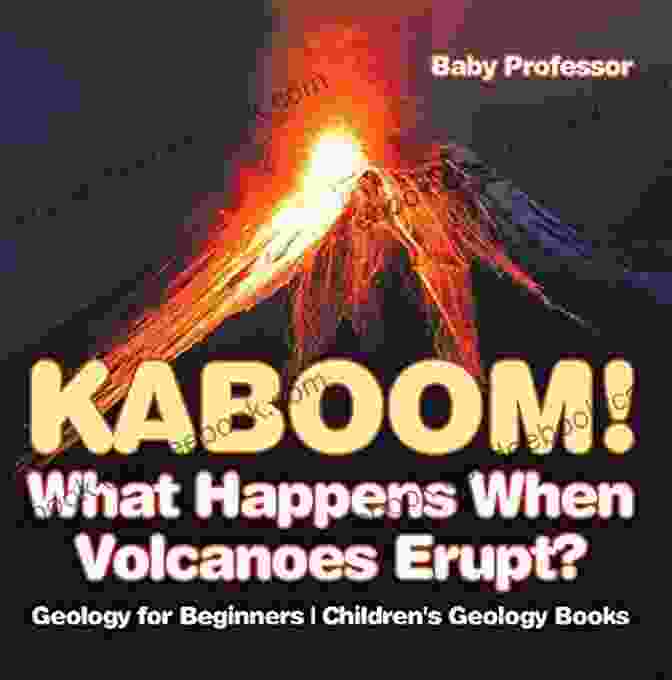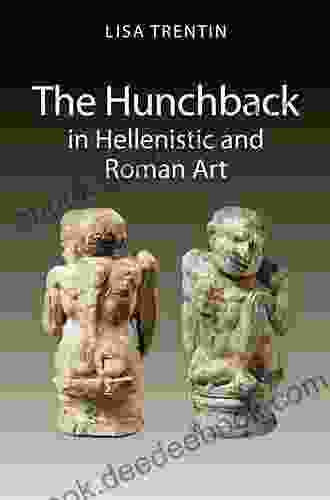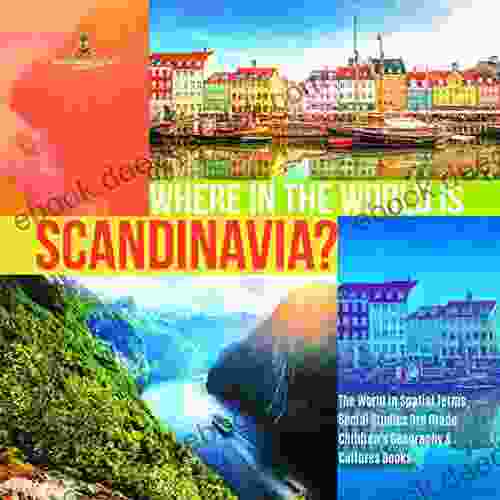Kaboom! What Happens When Volcanoes Erupt: Geology for Beginners

Volcanoes are one of the most fascinating and powerful forces of nature. They can erupt with incredible force, spewing ash, lava, and gas high into the atmosphere. These eruptions can have a devastating impact on human populations and the environment, but they can also be a source of wonder and inspiration.
4.6 out of 5
| Language | : | English |
| File size | : | 3373 KB |
| Screen Reader | : | Supported |
| Print length | : | 64 pages |
In this article, we'll explore what happens when volcanoes erupt, and how we can learn from them. We'll start by taking a look at the different types of volcanoes, and then we'll discuss the different stages of an eruption. Finally, we'll talk about the impact of volcanic eruptions on human populations and the environment.
Types of Volcanoes
There are many different types of volcanoes, but they can be broadly classified into two main groups: stratovolcanoes and shield volcanoes.

Stratovolcanoes are the most common type of volcano. They are typically tall, symmetrical cones with steep sides. Stratovolcanoes are formed by the accumulation of layers of lava and ash. As the volcano erupts, the lava and ash build up on the sides of the cone, making it taller and steeper.

Shield volcanoes are the largest type of volcano. They are broad, gently sloping cones with a wide base. Shield volcanoes are formed by the eruption of large volumes of low-viscosity lava. As the lava flows from the volcano, it spreads out and forms a broad, flat cone.
Stages of an Eruption
Volcanic eruptions can occur in a variety of ways, but they typically follow a general pattern. The first stage of an eruption is the precursory stage. During this stage, the volcano begins to show signs of unrest, such as increased seismic activity, ground deformation, and changes in gas emissions.
The second stage of an eruption is the eruptive stage. This is when the volcano actually erupts, and lava, ash, and gas are expelled from the volcano. The eruptive stage can last for hours, days, or even weeks.
The third stage of an eruption is the post-eruptive stage. This is when the volcano begins to calm down and the eruption starts to wind down. The post-eruptive stage can last for months or even years.
Impact of Volcanic Eruptions
Volcanic eruptions can have a devastating impact on human populations and the environment. The most immediate danger is from the eruption itself, which can cause widespread destruction and loss of life. Pyroclastic flows, which are fast-moving clouds of hot gas and ash, can incinerate everything in their path. Lahars, which are mudflows composed of volcanic debris, can also be deadly.
In addition to the immediate danger, volcanic eruptions can also have long-term impacts on human populations and the environment. Volcanic ash can pollute water supplies and make it difficult to breathe. Volcanic gases can also contribute to climate change.
However, volcanic eruptions can also be beneficial. Volcanic ash can fertilize the soil, and volcanic rock can be used to build roads and other infrastructure. Volcanic eruptions can also create new land, and they can provide a habitat for plants and animals.
Learning from Volcanoes
Volcanoes are a powerful force of nature, but they can also be a source of valuable information. By studying volcanoes, we can learn more about the Earth's history and evolution. We can also learn how to predict and mitigate the effects of volcanic eruptions.
One of the most important things we can learn from volcanoes is how to predict eruptions. By monitoring volcanic activity, we can identify the signs that an eruption is imminent. This information can be used to warn people in danger and to evacuate them from the area.
We can also learn from volcanoes how to mitigate the effects of eruptions. By building dams and levees, we can protect communities from lahars. By planting trees and other vegetation, we can help to stabilize volcanic slopes and prevent erosion.
Volcanoes are a fascinating and powerful force of nature, but they can also be a source of valuable information. By studying volcanoes, we can learn more about the Earth's history and evolution, and we can also learn how to predict and mitigate the effects of volcanic eruptions.
4.6 out of 5
| Language | : | English |
| File size | : | 3373 KB |
| Screen Reader | : | Supported |
| Print length | : | 64 pages |
Do you want to contribute by writing guest posts on this blog?
Please contact us and send us a resume of previous articles that you have written.
 Book
Book Text
Text Story
Story Genre
Genre Reader
Reader E-book
E-book Newspaper
Newspaper Paragraph
Paragraph Sentence
Sentence Shelf
Shelf Glossary
Glossary Foreword
Foreword Preface
Preface Synopsis
Synopsis Annotation
Annotation Codex
Codex Tome
Tome Bestseller
Bestseller Biography
Biography Autobiography
Autobiography Reference
Reference Encyclopedia
Encyclopedia Thesaurus
Thesaurus Narrator
Narrator Character
Character Librarian
Librarian Catalog
Catalog Card Catalog
Card Catalog Borrowing
Borrowing Scholarly
Scholarly Lending
Lending Reserve
Reserve Reading Room
Reading Room Rare Books
Rare Books Special Collections
Special Collections Study Group
Study Group Storytelling
Storytelling Reading List
Reading List Theory
Theory Textbooks
Textbooks Yves Lugrin
Yves Lugrin Kevin Ure
Kevin Ure John Measey
John Measey Melissa R Wolfe
Melissa R Wolfe B Scott Christmas
B Scott Christmas Jay K Morley
Jay K Morley Carol Burmeister
Carol Burmeister Jill Lepore
Jill Lepore Ian Kelly
Ian Kelly Bob O Connor
Bob O Connor Scott Cook
Scott Cook Philip Gray
Philip Gray Ruth F Davis
Ruth F Davis Jeff Billings
Jeff Billings Barroux
Barroux Brad Meltzer
Brad Meltzer Hazel Carter
Hazel Carter Tana Johnson
Tana Johnson Don Fredrick
Don Fredrick Tim Pierce
Tim Pierce
Light bulbAdvertise smarter! Our strategic ad space ensures maximum exposure. Reserve your spot today!

 Terence NelsonModeling and Benchmarking Supply Chain Leadership: Unlocking Competitive...
Terence NelsonModeling and Benchmarking Supply Chain Leadership: Unlocking Competitive... Marcus BellFollow ·15.6k
Marcus BellFollow ·15.6k Joseph HellerFollow ·3.3k
Joseph HellerFollow ·3.3k Jessie CoxFollow ·4k
Jessie CoxFollow ·4k Henry David ThoreauFollow ·9.4k
Henry David ThoreauFollow ·9.4k Demetrius CarterFollow ·13.9k
Demetrius CarterFollow ·13.9k Josh CarterFollow ·9.8k
Josh CarterFollow ·9.8k Darnell MitchellFollow ·15.9k
Darnell MitchellFollow ·15.9k J.R.R. TolkienFollow ·12.6k
J.R.R. TolkienFollow ·12.6k

 E.E. Cummings
E.E. CummingsThe Routledge International Handbook on Fear of Crime
Fear of crime is a serious problem that can...

 Fletcher Mitchell
Fletcher MitchellThe Hunchback in Hellenistic and Roman Art: A...
The hunchback, or kyphosis, is a physical...

 Victor Turner
Victor TurnerA Comprehensive Guide to Needle Felting for Moms:...
Needle felting, a captivating craft...

 Joseph Foster
Joseph FosterWhere is Scandinavia?
Scandinavia is a region in...

 Leon Foster
Leon FosterNovel Shades of Magic: A Masterpiece of Magical...
An Enthralling...
4.6 out of 5
| Language | : | English |
| File size | : | 3373 KB |
| Screen Reader | : | Supported |
| Print length | : | 64 pages |












